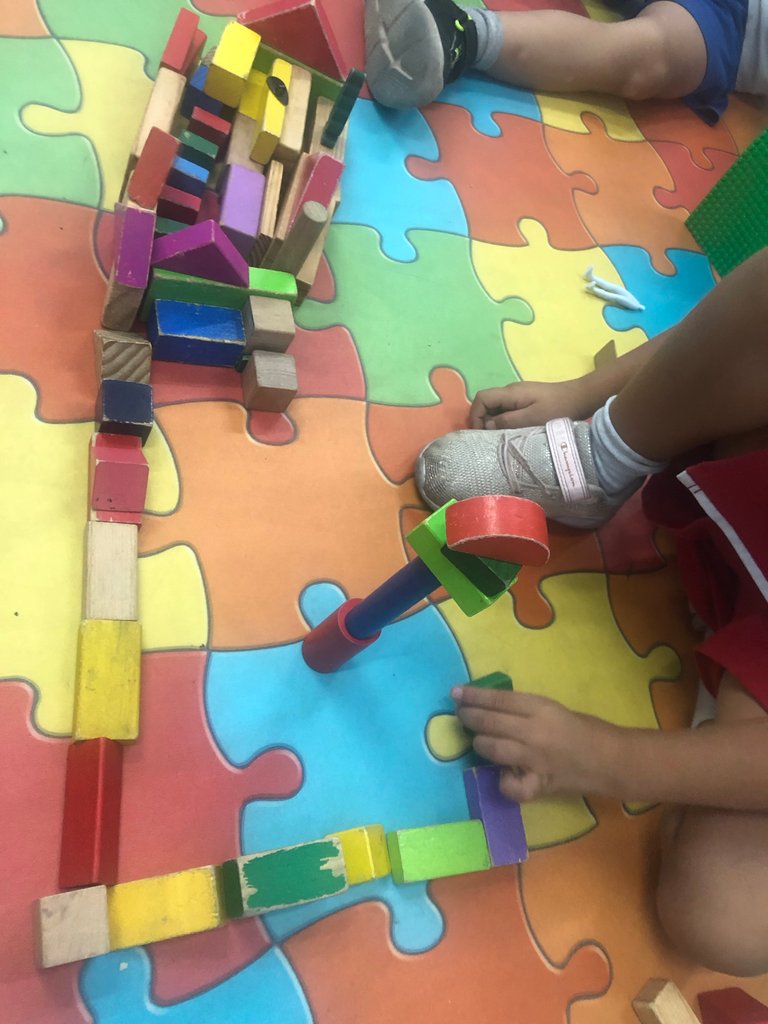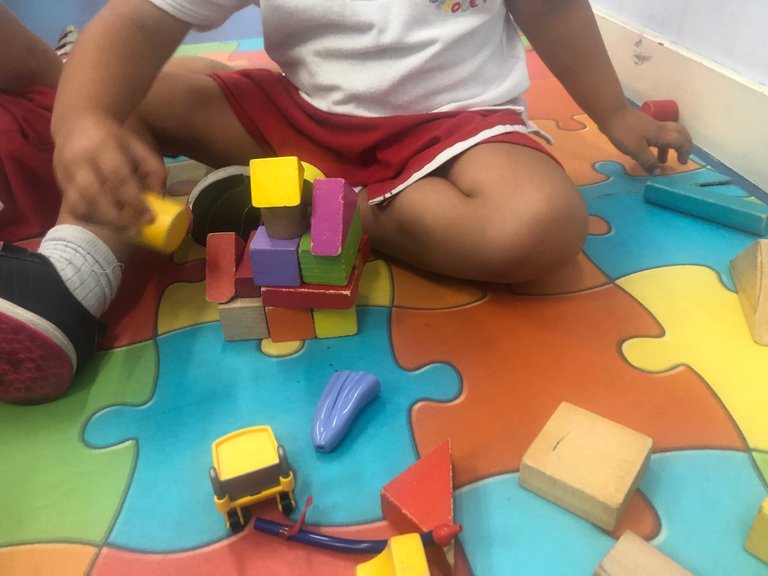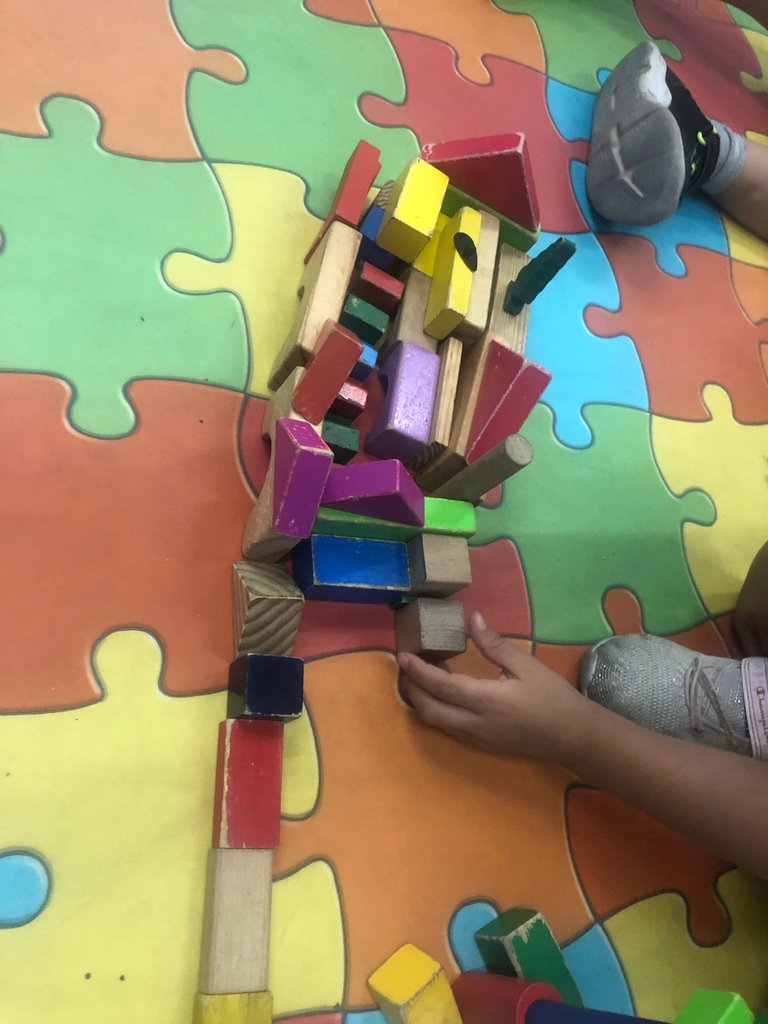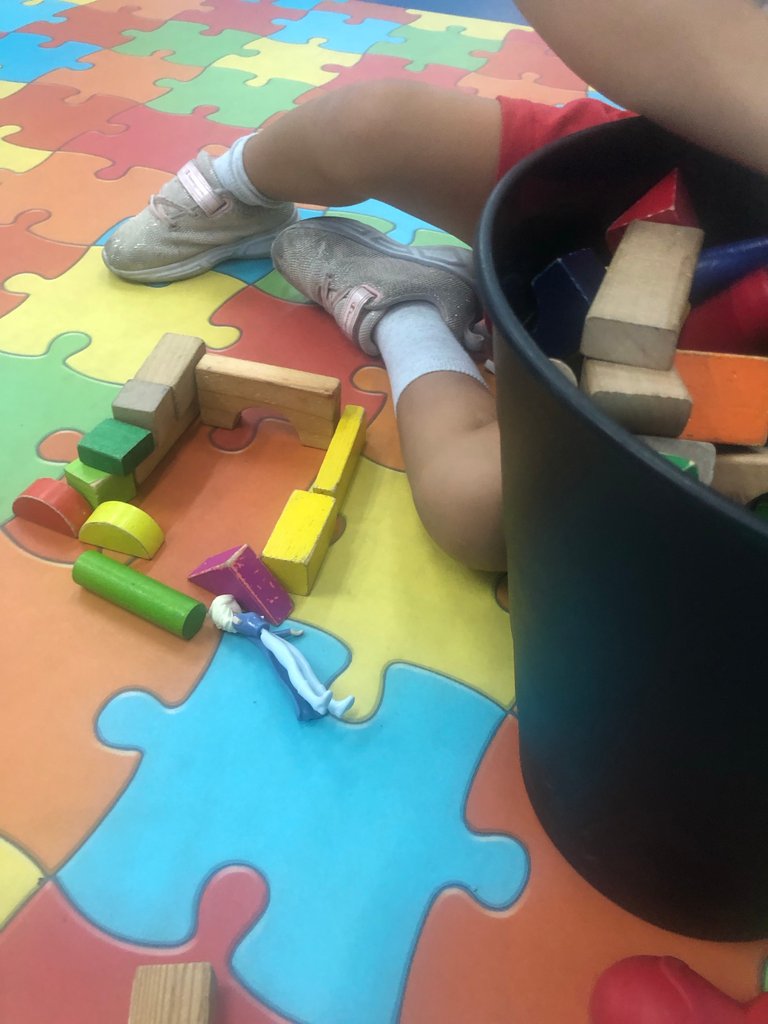Fun morning
Hello everyone, for those who don't know, I work with 4 and 5 year olds in a kindergarten. Today in the morning I let them play with the legos.
Lego is a game that helps children's development. This allows the construction of the most diverse things and, as such, it is a game that appeals to all age groups.

As many options as there are on the market, however, one thing is true: building blocks – commonly known as lego or legos – will never go out of style. Timeless and fun, these will please the little ones.

- But, after all, what are the benefits of lego for the child?
Playing with lego helps the child on many levels and offers many benefits. Among the main benefits of playing with building blocks, we find the following:
. Stimulates the child's coordination;
. Stimulates the imagination;
. Helps in creating the child's independence: Improves motor and visual coordination;
. Improves the perception of space;
. It can help to increase vocabulary;
. Improves problem-solving ability;
. Stimulates understanding;
. Creates new skills;
. Improves the child's attention capacity;
. Teaches the child to organize their thoughts;
. When in a group, it can stimulate interaction and gain social skills;
. Improves understanding of the world by imitating spaces and models;
. Improves the child's self-esteem;
. Creates more organized children.

- Different ways to play with legos
This topic may seem strange to you, as, for many people, letting the child play freely with the building blocks is the obvious and immediate way to use this ludic-educational tool. It's not a lie! You can leave the child free to create, spontaneously, encouraging their imagination and exploring the vast possibilities of lego.

- Turn play into a learning moment
Babies and children are constantly learning and a moment of play with building blocks is perfect for teaching them some new concepts.
In addition to the colors of the blocks allowing the learning of terms related to tones; you can also take the opportunity to teach terms related to the format (“square” or “rectangular”, for example); location terms such as “above”, “below”, “outside” or “inside”; terms related to measurements and directions (such as “right/left” or “large/small”.
It can also be a time to teach about numbers, encouraging the child to count how many blue pieces there are or how many squares there are in the game.

I hope you like it, see you soon friends 😀
0
0
0.000
0 comments